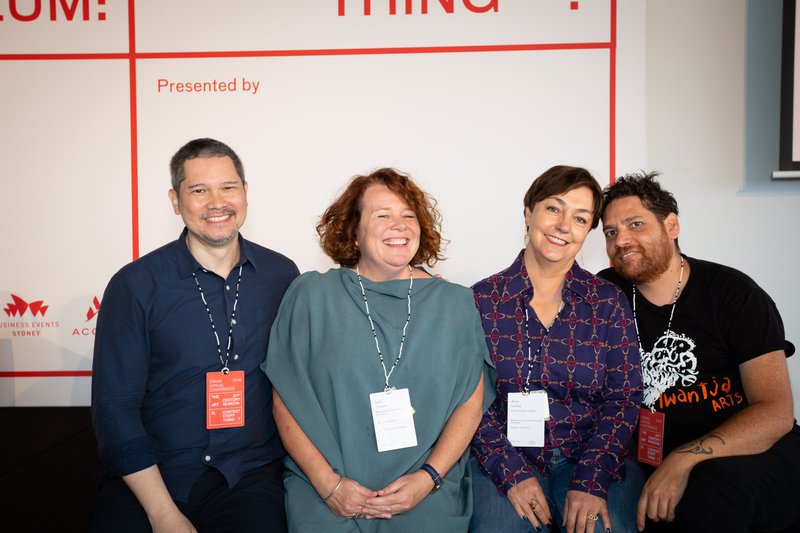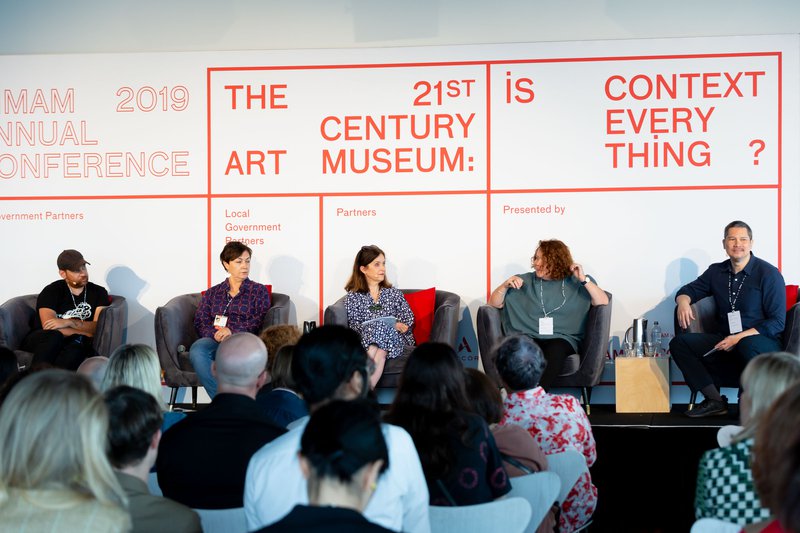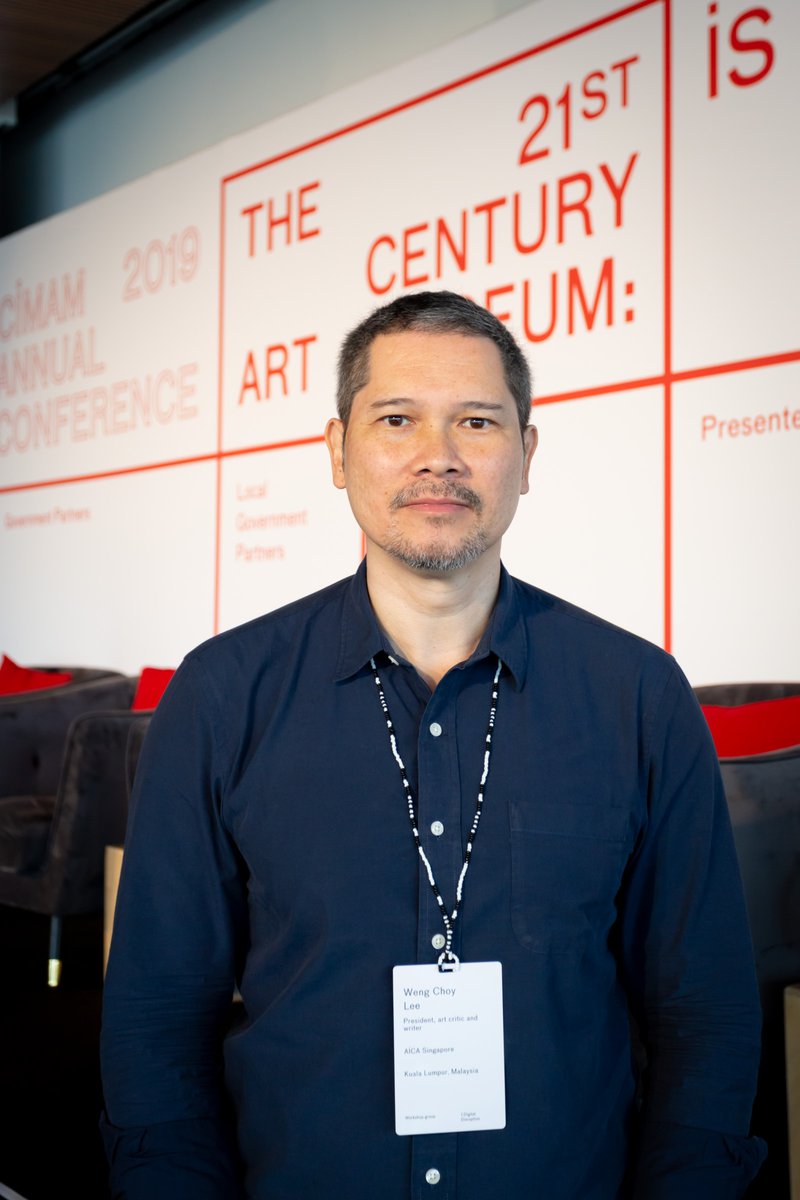Lee Weng Choy
Panel discussion moderated by Lee Weng Choy, Art critic, writer, president AICA Singapore, Kuala Lumpur, Malaysia.
Titled The 21st Century Art Museum: Is Context Everything? the CIMAM 2019 Annual Conference took place 15-17 November in Sydney hosted by the Museum of Contemporary Art Australia.
Day 3: Sunday 17 November
Beyond the Walls
Panel Conclusions by Lee Weng Choy

Our panel discussion involved keynote presenter Sally Tallant, and the presenters of the two case studies, Anne Loxley, Tony Albert, and Lara Strongman; I served as moderator.
In her keynote, titled “Outside in, Inside Out,” Tallant argued that what we need today are arts organizations and institutions that are porous, so that art and artists can inhabit spaces that are defined and created together with their communities. Her presentation drew on her experiences working at the Serpentine, the Liverpool Biennial, and her new post at the Queens Museum. She explained how she takes a situated approach to curatorial practice that emphasizes place and context as starting points.

Loxley and Albert spoke of the significance of the Native Institution, and how the traditional owners of the land on which it was sited, the Darug nation, have worked for decades for it to be returned to them. In October 2018, the Blacktown Native Institution site was handed back to the Darug people — the first such transfer of land. The Blacktown Native Institution Project played a key supporting role in this process, in part by creating visibility and space for the careful navigation of intergenerational trauma and cultural protocols as well as engagement with a non-indigenous public that is frequently reluctant to acknowledge this aspect of Australia’s history.
Strongman spoke about her work at the Christchurch Art Gallery Te Puna o Waiwhetū in the aftermath of the devastating Canterbury earthquakes of 2010 and 2011. She described how public art developed a prominent and increasingly participative role in the new culture of the city. As the demolition of earthquake-damaged buildings took place around them, the Gallery team began programming art in abandoned houses, vacant lots, and on walls that were still standing.
During the break after the presentations and before the panel discussion, the speakers and I met, and we decided that given this was the last panel of the conference, and given our theme of going beyond the walls of the institutions, we should focus our discussion less on an elaboration of the presentations, than a turning outward to the audience — to get their views on some of the themes of the session, and their reflections on the conference as a whole.
One audience member asked, “is context really everything?” He was by no means wanting to diminish the importance of contextualization, but he argued for the value in thinking about the aspects of art that cannot be explained by context alone. A number of other speakers shared the difficulties that their art spaces were experiencing. An audience member from Japan spoke of a recent censorship struggle, arguing that there is always much needed work to be done after a controversy but that it often falls by the wayside. Another audience member spoke of the current struggles in running cultural spaces in Poland that are a direct result of the right-wing political climate. Another also addressed a similar situation in Brazil.
Lee Weng Choy's biography

Lee Weng-Choy is an independent art critic and consultant based in Kuala Lumpur. He is also the president of the Singapore Section of the International Association of Art Critics (AICA). Previously, Lee was Artistic Co-Director of The Substation in Singapore, and has taught at the School of the Art Institute of Chicago, the Chinese University of Hong Kong, and the Sotheby’s Institute of Art — Singapore.
He has done project work with various arts organisations, including Ilham Gallery and A+ Works of Art, both in Kuala Lumpur, and the NTU Centre for Contemporary Art Singapore, and National Gallery Singapore.
Lee writes on contemporary art and culture in Southeast Asia, and his essays have appeared in journals such as Afterall, and anthologies such as Modern and Contemporary Southeast Asian Art, Over Here: International Perspectives on Art and Culture, and Theory in Contemporary Art since 1985.